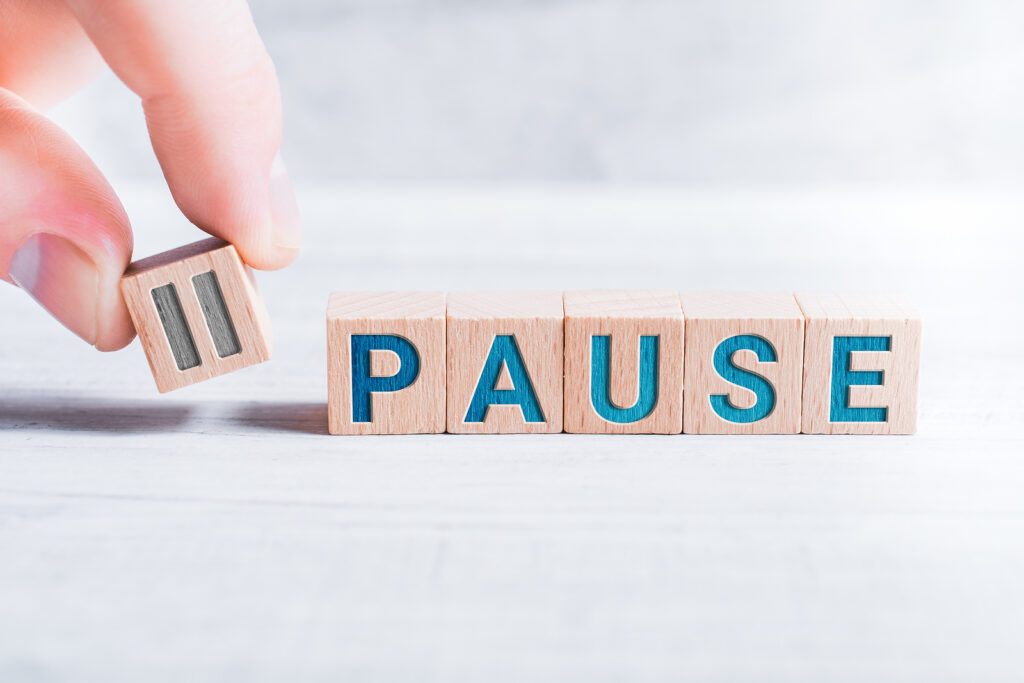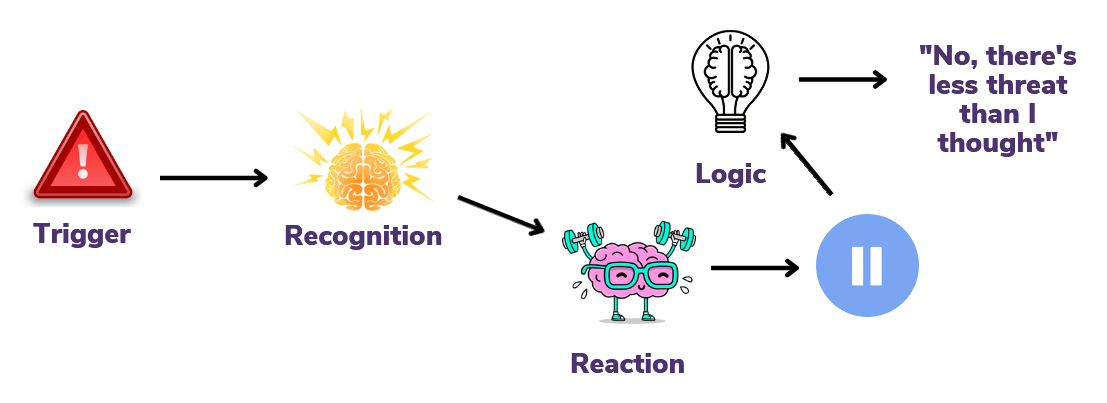
by Staff writer
What happens when emotions hit?
This article is part of our current series explaining what to expect from different forms of therapy that we deliver at JSA Psychotherapy.
When we’re in the moment, it can be really difficult to remember how to respond productively to strong emotions. This sheet helps us keep track of what’s going on and reminds us of our various action points.
Step 1: Something happens. We call this a trigger and it’s registered in the ‘recognition centre’ of the brain (called the thalamus).
Step 2: Our recognition centre sends out two signals to other parts of our brain, our ‘fight/flight/freeze reaction centre’ (called the amygdala) and to our ‘logic centre’ (called the cortex).
It’s a bit like this:

Step 3: The path to the reaction centre is fastest and provokes a response first. This makes sense, if there really was a threat, we’d need to act quickly! The problem is, it’s also quite vague. It communicates that you feel threatened but not exactly what’s going on. That’s the job of step 4.
Step 4: The pathway to the logic centre arrives. This pathway is a lot more detailed; it tells you what’s going on, who is there and what can be done about it. This information may highlight that there actually isn’t as much of a threat as you first thought. That can be a problem though, because you may have already acted on the first, faster, but less detailed pathway.
Step 5: In a nutshell, we aim to pause after the first pathway kicks in and we have had our initial emotional reaction. As soon as you notice the strong emotions rising, try to pause. You can do lots of things to help you pause, whether that’s breathing or meditative exercises or asking for a five minute break. Importantly though, these methods don’t cause any actual change, they just buy us time.
Step 6: Once both pathways have arrived, you have loads of information to make a productive decision.
So this is where we’re up to:

Step 7: At any point, we can buy into and agree with the message of threat. This can be when our first emotions kick in (step 3) or after we get a more detailed understanding (step 6). Either way, if we say ‘yes, you’re right, I’m in some kind of threat here’, it amplifies and boost the emotional reaction. This is like throwing petrol on a fire. Again, this isn’t always wrong. If we really are under threat, we need strong action to protect ourselves. However, what if we’re not? Buying into a threat which isn’t actually that serious is the main reason we have hurtful and damaging emotional reactions. These may hurt us or ones we love.
It looks a bit like this:

Step 8: Pausing before doing anything lets us act with the most possible information and make the most informed choice. If we realise and remind ourselves that there isn’t as much of a threat as we initially thought, we are then free to act productively. This can be any action which helps us problem solve and achieve our needs. You could act assertively, take a moment to show yourself some kindness or make a strategic decision.
It looks a bit like this:

Step 9: Making a specific statement to yourself about the threat level usually has a very rapid effect on our emotions, quickly reducing something which felt overwhelming only moments ago. Now we feel better and are acting productively.
Result: We do something to buy us time while the second pathway kicks in and gives us a more complete picture of the situation. This evaluation of the current level of threat determines whether we’ll react with strong emotions or with calm productivity.
If you would like to download an info sheet version of this article as a pdf for your own use, you can do so by clicking this link.


